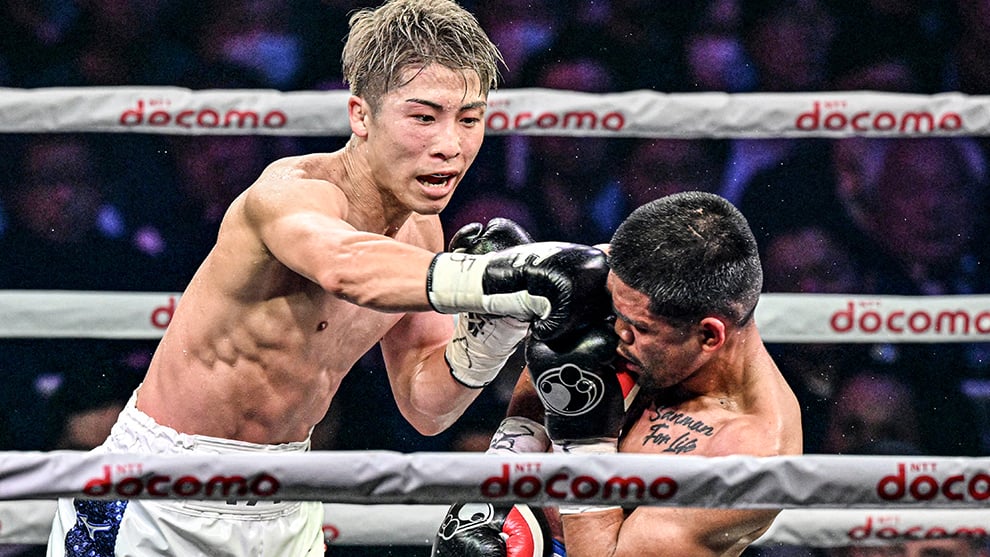By Dan Morley
Japanese boxing has long produced legendary fighters. Dating back to the ‘60s, an era in which Japan’s ferocious Fighting Harada cemented himself as the country’s greatest pugilist—compiling multiple division titles and scoring simultaneous victories over a man deemed by some as the 1960s fighter of the decade, Eder Jofre.
Whilst Harada, a human embodiment of a wrecking ball, impressively cemented his everlasting legacy by beating Brazil’s best-ever fighter -being the only man in Jofre’s 80+ fight career to do so- his longstanding achievements may soon be surpassed.
Japanese boxing is currently at the peak of its power, holding more champions today than any other country in the world. The bantamweight and super-bantamweight divisions are solely ruled by Japanese champions. Knockout sensation Junto Nakatani most recently entered the illustrious Ring Magazine’s top 10 pound-for-pound rankings.
Yet the man he joins amongst boxing’s best towers above the rest. The monster whose menacing presence has struck fear and devastation across four divisions over a gruesome decade of dominance is Naoya Inoue.
I had first heard whispers of a Japanese sensation dismantling champions of their titles and livers back in 2014. A brutal body puncher with defensive craft and blistering hand speed, systematically dispatching of unified world champions from just his fourth professional fight.
Whilst Inoue has become a star in recent years and has reigned as the Ring Magazine’s best fighter in the world, it’s easy to forget how much he has already accomplished, especially for those less familiar with boxing’s smaller divisions.
Naoya’s record is 27-0 with 24 KOs. When you dig into the quality, it becomes something to behold. As a fight with former world champion TJ Doheny beckons, Inoue currently holds 14 victories against 13 World Champions, the second most champions defeated in boxing today, only behind Canelo.
22 of these victories have been in consecutive world title fights, with 20 KOs – the total number of bouts with world honours on the line, just four shy of the legendary Floyd Mayweather Jr’s career total.
After stopping Adrian Hernandez to win his first title, ‘The Monster’ then blasted away Omar Narvaez in two rounds. Narvaez, one of boxing’s longest-reigning champions, had 22 title wins to his name, remaining undefeated at the weight throughout his run, having suffered just one defeat in an ill-fated challenge against bantamweight great Nonito Donaire, who would win via UD.
Just eight fights in, already a multi-division champion, Inoue retained his second division title eight times before moving up to embark on the now legendary ‘Two Division Undisputed’ conquest.
The bantamweight champions, Jamie McDonnell, Juan Carlos Payano (previously unstopped) and undefeated Emmanuel Rodriguez, were coldly blasted away within the first and second rounds. A fight of the ages followed, with Nonito Donaire, incredibly trading toe to toe, in Inoue’s toughest challenge to date, yet it was one he passed valiantly.
Champions Donaire, Moloney and Butler would all fall to violent stoppages, with bantamweight supremacy completed. Refusing to take easy fights, the super-bantamweight division’s champions Fulton, Tapales and Nery rapidly fell victim just over a year and a half later.
A brilliant resume already, all-time great figures and achievements acquired. Yet Inoue doesn’t seem to be slowing down, having already travelled a five-division span from Junior Flyweight to super-bantamweight, maintaining all-time great knockout power. How much further can the monster go?
The limitations in that answer may lie in his ceiling weight-wise, yet I think the 126-pound division has titles that Inoue is more than capable of winning.
Whilst the resume alone speaks volumes, it’s also worth exploring stylistically what has made Inoue such a potent destroyer.
Of course, there is the formidable punching power reminiscent of old-school, all-time great punchers in the lighter weight classes. Wilfredo ‘Bazooka’ Gomez scored KOs across all of his first 38 wins, Carlos Zarate retired with 63 KOs in 66 Career victories, and Mexican bantamweight great Ruben Olivares finished up with 79 KOs in 89 wins. Inoue is blessed with similar kinds of freakish power from a small frame.
Yet it is culminated with Pacquiao-esque speed and phenomenal timing. If you assess the knockouts, specifically the Moloney or Payano right hands, the exquisite timing of these punchers maximises the damage.
He can walk you down continuously while remaining elusive on the front foot. The power in his hands, plus a high-level ring IQ, keep retreating opponents extremely hesitant while consistently burning mental energy.
This can be seen with both the set-up shots he releases to create crushing openings elsewhere, for example, the short right hand released before smashing Narvaez’s liver or the constant, long-winding jab to Fulton’s stomach, which over time sets up the right hand to finish the fight.
Another monstrous performance from Inoue. Getty Images
If you attempt to push Inoue back, his ability to judge distance and counterpunch is elite. We saw clear glimpses of this in the Nery fight, where the over-eager Mexican charged into a retreating Inoue left hook.
On the off chance you are able to catch him, as seen in both the Nery bout and Donaire classic, he will adapt, and possesses the smarts and heart to push through adversity and remain on top. Even a broken orbital bone proved a small obstacle to overcome, with Inoue blocking the eye with his right glove to deal with vision problems.
Securing dozens of knockouts with uppercuts, hooks, straights and body shots – the arsenal of finishing punches is complete. With all of this combined, entering what may be deemed to be his peak years, building off of an already brilliant career, I believe Inoue, will eventually cement himself as an all time great and Japan’s greatest of all time.
